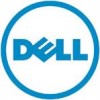Dell PowerVault 130T DLT Service Manual - Page 21
Microcode, DLT Drives, Read/Write Tape Speed - events
 |
View all Dell PowerVault 130T DLT manuals
Add to My Manuals
Save this manual to your list of manuals |
Page 21 highlights
PowerVault 130T Service Manual Component Locations Data archive Hierarchical storage management (HSM) Media management Disaster recovery The type of host-software solution chosen can optimize the performance of small to medium-sized networks, support multiple platforms, improve availability and scalability of products, and deliver fully automated operations. Host-level software also contains drivers using SCSI commands to control the motion of the robot and track the location of cartridge tapes (audit) using the volume serial number (VOLSER) on the cartridge bar code labels. Microcode Microcode for the library and tape drives controls the functional operation of these devices. The microcode for tape drives is loaded from a cartridge tape. The microcode for the library is loaded from a personal computer (PC) through the CSE port on the rear of the library. Since library microcode is stored in flash prom, in the event of a power outage, the PowerVault 130T powers on and returns to its functional state without requiring microcode reload when power comes back. DLT Drives The PowerVault 130T Library has slots for up to four DLT4000 or DLT7000 tape drives. These are high-performance, large capacity, streaming cartridge tape drives using half-inch CompacTape types III, III XT, or IV. Depending on the tape, type of data, type of tape drive, and compression algorithm, each cartridge tape can store from 10 to 70 gigabytes (GB) of data. 4473D Table 1-1. DLT4000/DLT7000 Comparison Parameter DLT4000 Cartridge Capacity Native Compressed 20 GB 40 GB Transfer Rate Native Compressed 1.5 MB/sec 3.0 MB/sec SCSI Interface Fast/Narrow Track Density 256 trks/in. Buffer Size 2 MB Read/Write Tape Speed 98 in./sec Rewind Tape Speed 150 in./sec DLT7000 35 GB 70 GB 5 MB/sec 10 MB/sec Fast/Wide 416 trks/in. 8 MB 160 in./sec 175 in./sec 1-7















